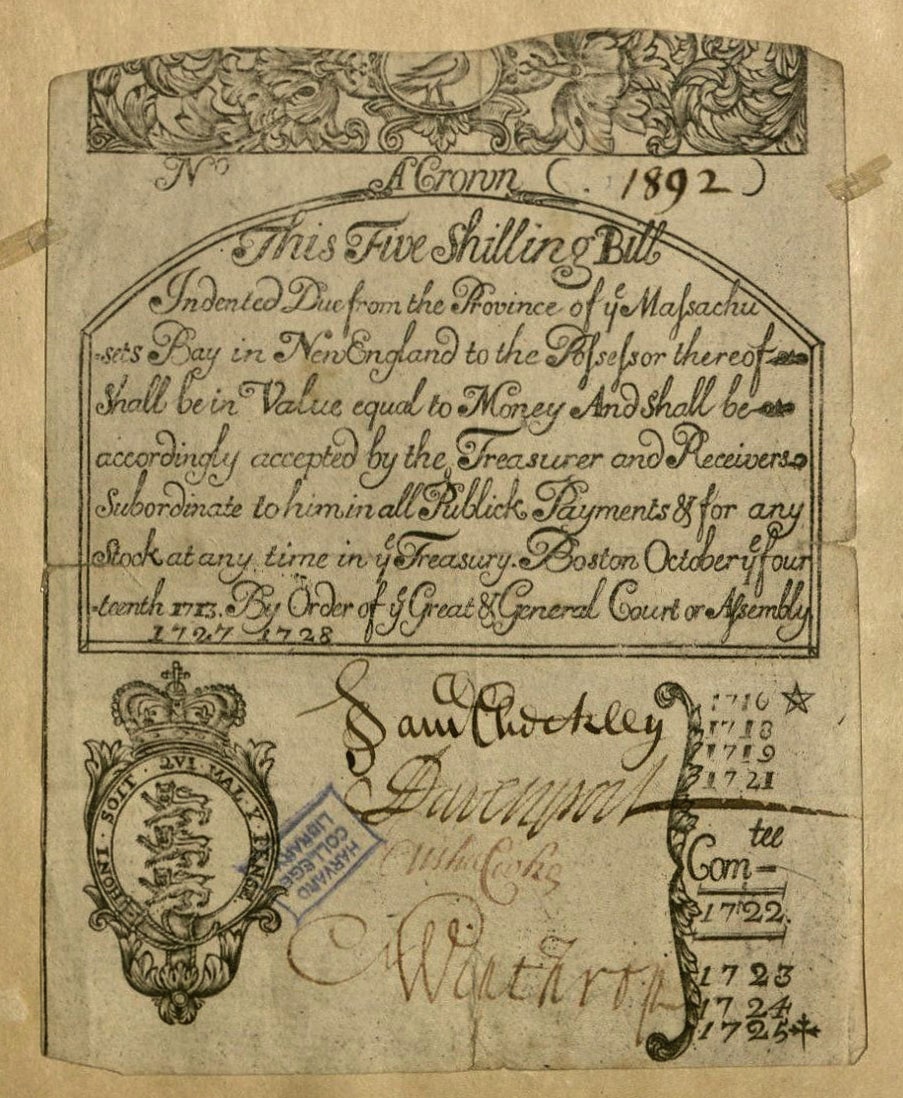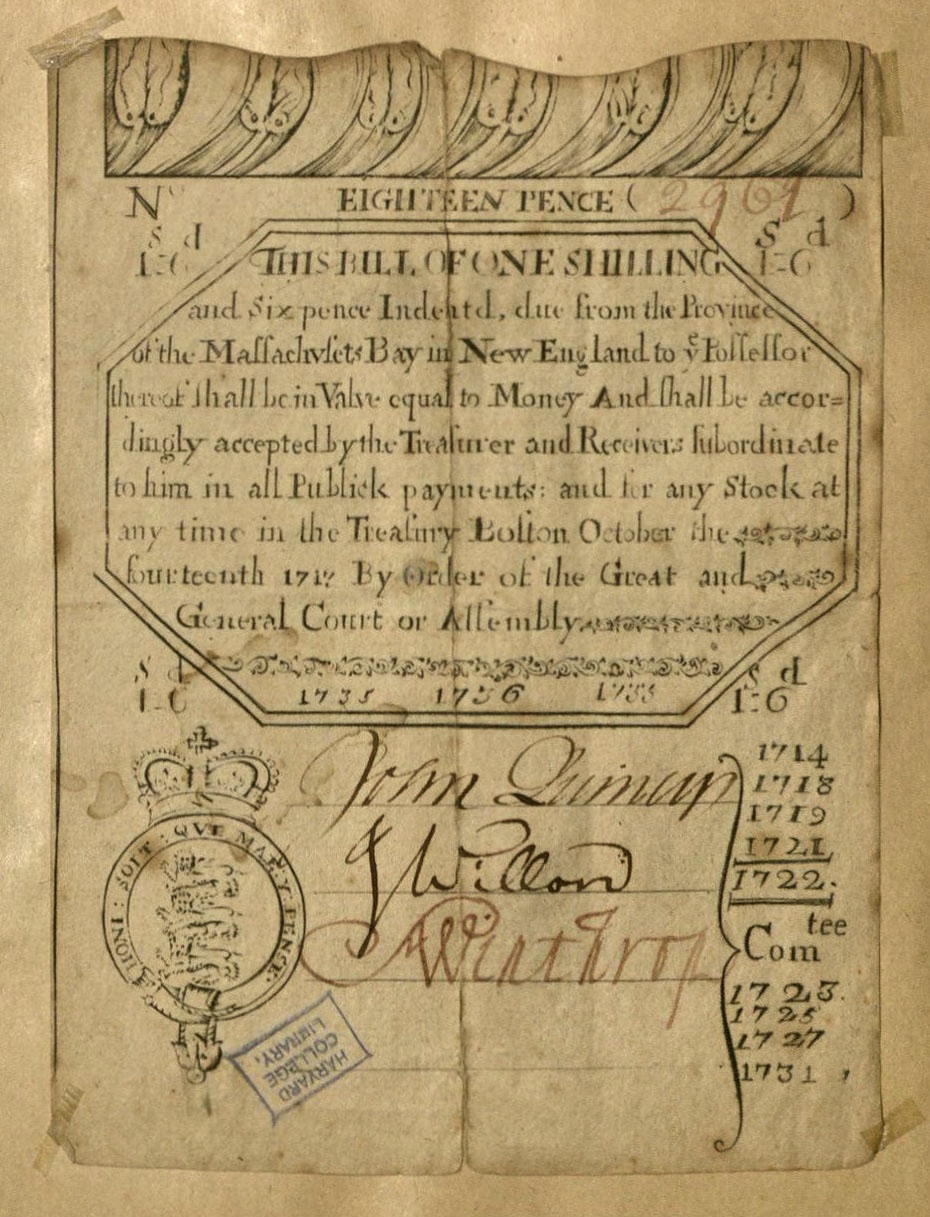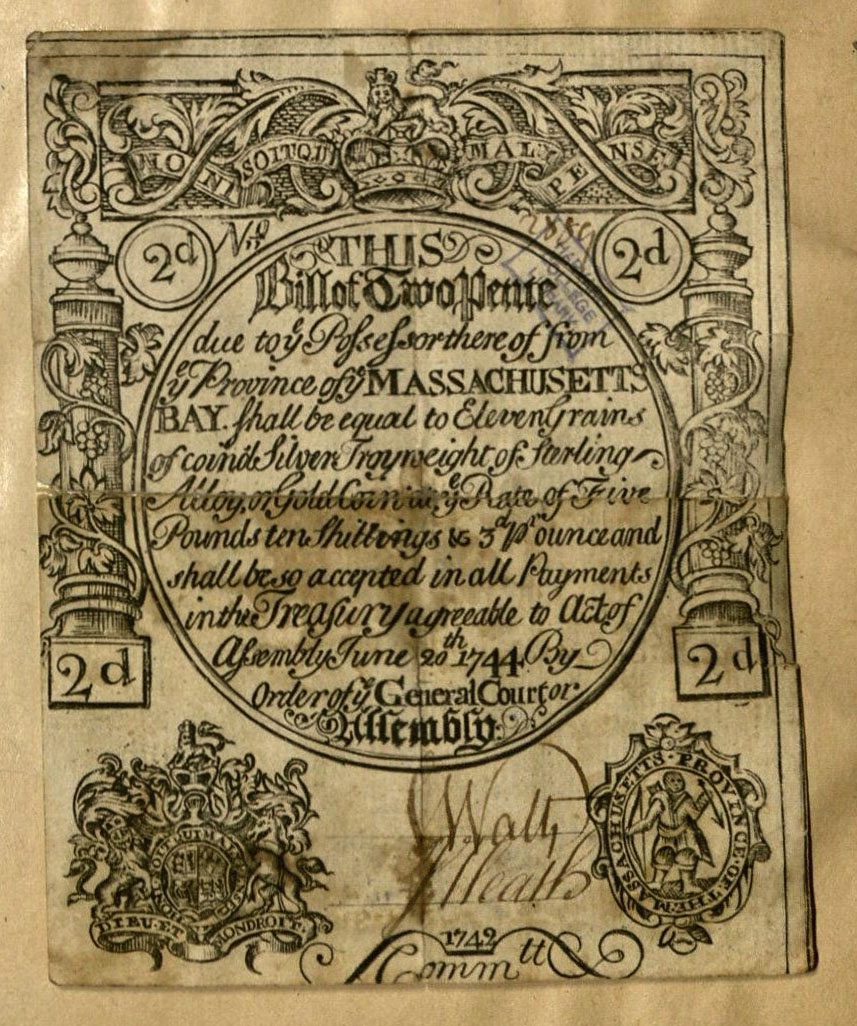The First Generations of Paper Currency, Printed in Colonial Massachusetts
The Vault is Slate's history blog. Like us on Facebook, follow us on Twitter @slatevault, and find us on Tumblr. Find out more about what this space is all about here.
These notes, printed by the Province of Massachusetts Bay in 1713, 1717, and 1744, are part of the first generation of paper currency in the United States. Massachusetts first printed folding bills in 1690 to pay for military expenses incurred during King William’s War. Other colonies followed suit.
To thwart counterfeiters, Massachusetts issued bills whose top edge was an indented line. Since this cut was made freehand with a blade, rather than mechanically, each indentation was slightly different. The treasury kept a stub, which could be used to verify a genuine bill.
The colonial experiment in paper currency sometimes caused chaos. Louis Jordan, of the University of Notre Dame’s Colonial Currency project, writes that the mid-18th-century was a time of currency confusion in Massachusetts, when Spanish silver “dollars” and two separate types of printed currency were all legal tender, and inflation ran out of control. “As individuals might make a purchase using all three varieties,” Jordan writes, “it was essential for merchants to know the current inflation rates and to keep a conversion chart handy.”
Between 1751 and 1773, the British Parliament made a series of attempts to fix the currency problem in the colonies. In 1751, Parliament acted to circumscribe colonial power to print money and use it for private purchases, while still allowing people to pay public debts (or taxes) in paper currency. (Colonial governments could still produce paper money to pay for specific projects, so long as they made plans to redeem the currency within a few years.)
Enforcement was uneven, and the rules were confusing. British creditors rebelled, angry at being repaid in less-valuable paper money. In 1764, Parliament restricted use of paper money for any payments, public or private.
The next currency printed in Massachusetts, Jordan writes, were the “Soldier Notes,” printed by Paul Revere and given to the soldiers mustered to fight before the Battle of Bunker Hill in 1775.
I first saw these bills on Harvard's Houghton Library's Tumblr.

Courtesy of Houghton Library, Harvard University.

Courtesy ofHoughton Library, Harvard University.

Courtesy ofHoughton Library, Harvard University.
